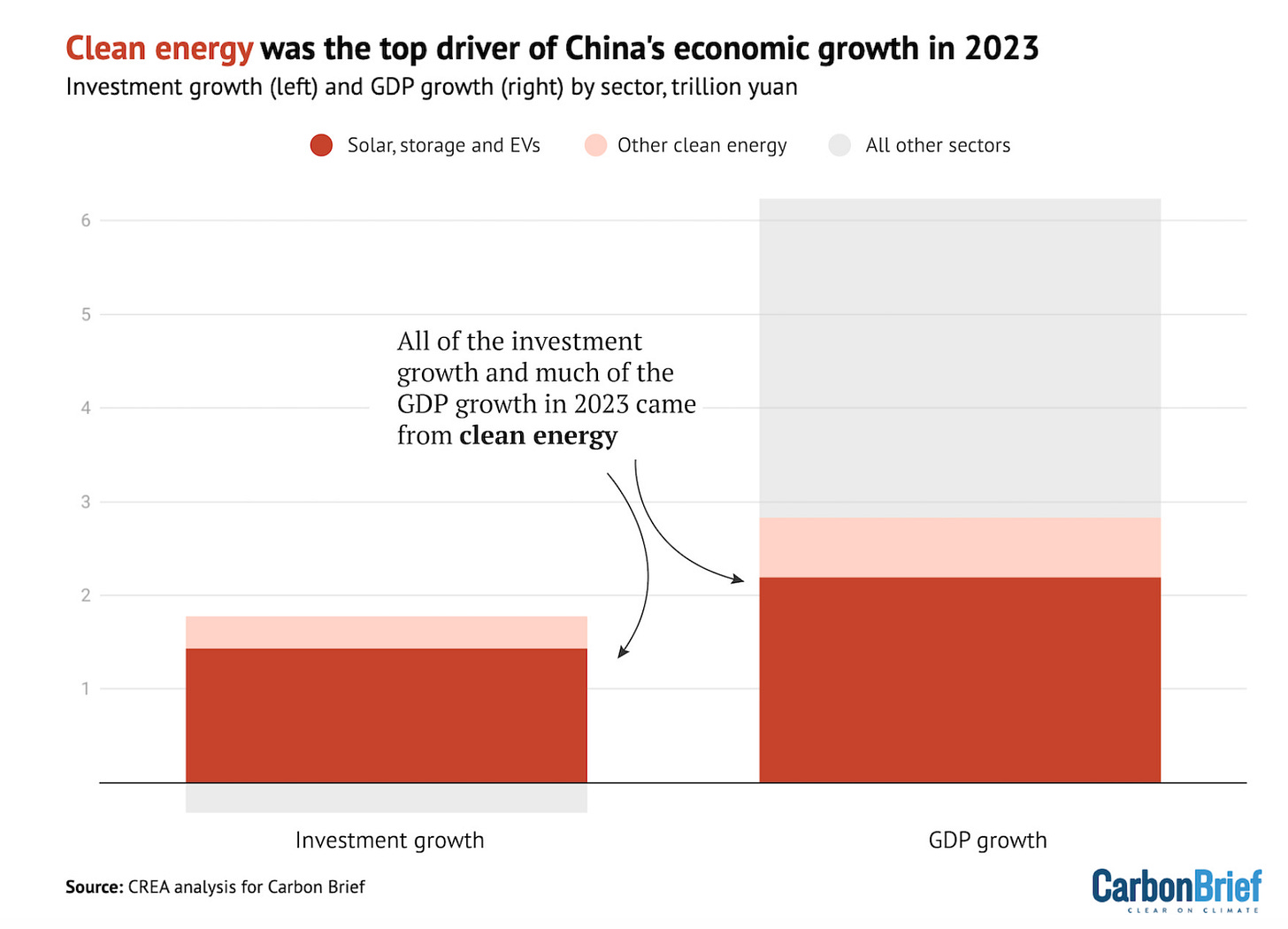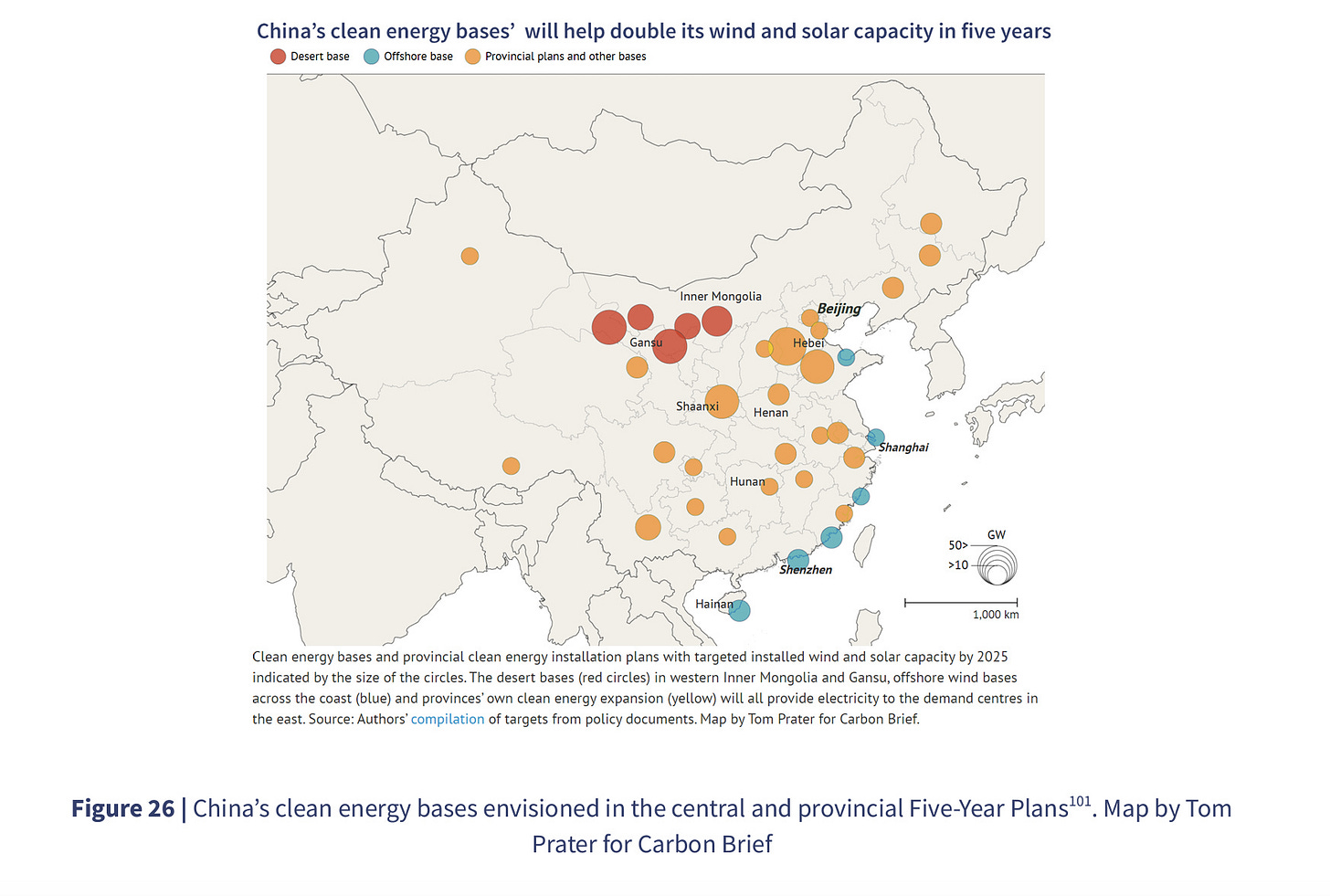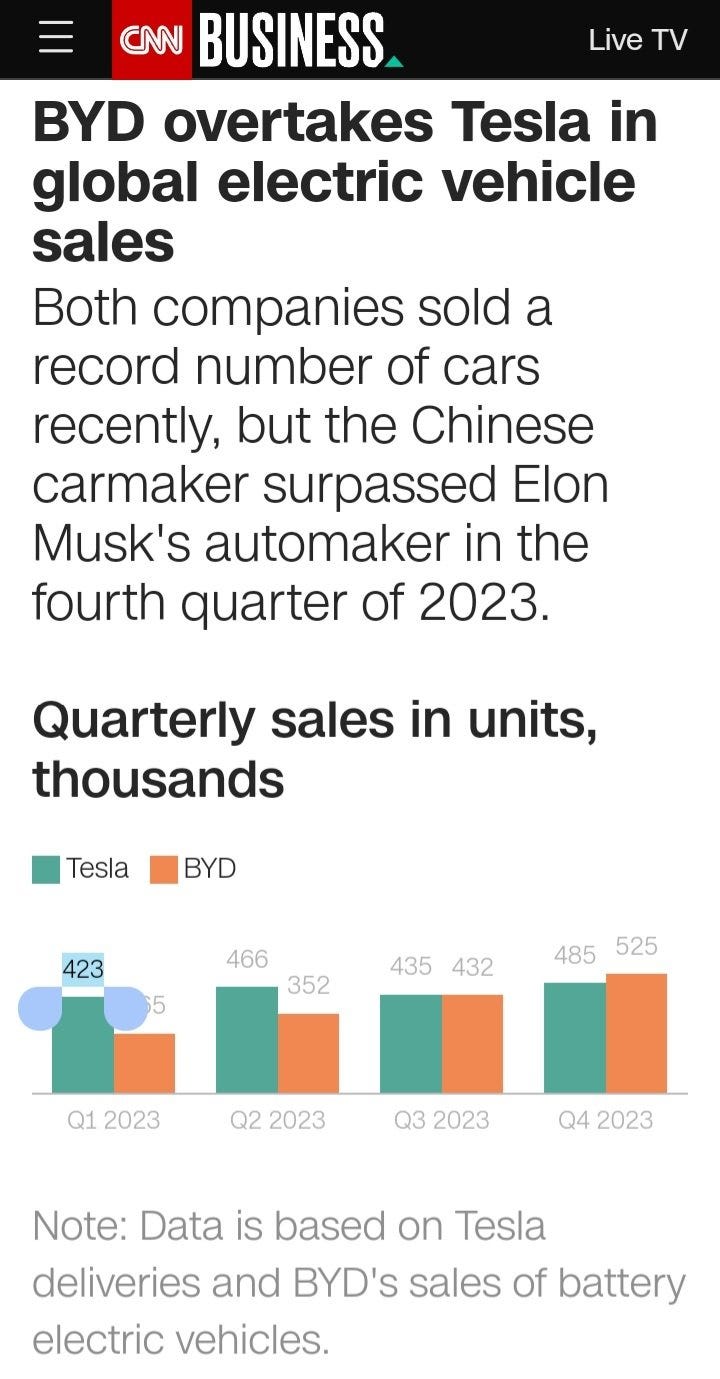PREAMBLE
China’s green energy thrust competes admirably against the green energy programs in the West - whether they are NextGenEU or the USA’s IRA.
Chinese manufacturers are expanding production of solar, wind, batteries and EV at a breakneck rate. Barring some unforeseen technological upset, China is set to be the leader in the first decades of the global clean energy transition.
In China’s energy-intensive economy, for the first time, clean energy has moved from being a nichè or sectoral interest, to being the principal growth factor for the whole economy.
Clean energy contributed a record 11.4tn yuan (US$1.6tn) to China’s economy in 2023. Clean energy accounted for 9.0% of China’s GDP in 2023, up from 7.2% in 2022.
China’s $890bn investment in clean-energy sectors is almost as large as total global investments in fossil fuel supply in 2023.
In China in 2023 green energy accounted for all of the growth in investment which was otherwise weighed down by the slump in real estate.
“Without the contribution of clean-energy sectors to China’s economic growth in 2023, the country would have seen its GDP rise by just 3.0%, instead of the 5.2% actually recorded.” Clean energy accounted for 40 percent of China’s overall economic growth, a larger share than any other sector.
The report from a team at CREA headed by Lauri Myllyvirta and Qi Qin, with research by Jingcheng Dai, Xinyi Shen and Chengcheng Qiu - all of CREA - states:
The analysis includes solar, EVs, energy efficiency, rail, energy storage, electricity grids, wind, nuclear and hydropower within the broad category of “clean-energy sectors”. All of these are technologies and infrastructure needed to decarbonise China’s energy supply and consumption. The so-called “new three” of solar, storage and EVs are all prominent in the table – and all recorded strong growth.
The detailed breakdown shows the relative importance of each sector and the split between investment in new capacity and current production, both of which contribute to GDP:
China’s huge surge into solar is at the heart of the story. This is being driven by two main vectors. The “clean energy base” programme which involve giant solar arrays, many of them in the desert. In their case the main issue is interconnection costs. China is also a pioneer in ultra high voltage transmission, but that is an expensive option.
In China, the other main driver of growth in solar investment has been the “whole-county distributed solar” program. This has accounted for the largest share of the surge in solar investment recorded above. Together with spending on EV, charging infrastructure, railways etc, this means that a large part of China’s clean energy acceleration has so far been driven by household and consumer focused spending.
excerpts from Adam Tooze Chartbook Carbon Notes 10.
Additional Notes:
The number of EVs sold annually in China grew from 1.3 million to a whopping 6.8 million, making 2022 the eighth consecutive year in which China was the world’s largest market for EVs, (MIT Technology Review, Feb. 2023).
The more than 6 million EVs sold in China in 2022 accounted for over half of global EV sales.
Indeed, China’s electric vehicle surge will shock global markets, (eastasia forum, 21/11/23), besides cracking the US-market, (Michelle Toh, cnn 19/01/24; view DW: How BYD killed Tesla; and read Cobalt Red Colonialism Raids).
Scripts published TWTW include:
1] Cobalt Red
2] Freedom can be found
3] Taiwan 2024 Elections
4] Cobalt Red Colonialism Raids
5] Malaysia Economic Reforms: A Trunkfull of Dirty Linens
6] MOMENTUM #184
7] FRIDAY FILES 2/01/24
Kindly distribute this journal to your peers and among diaspora communities.
best of weekends' readings.







